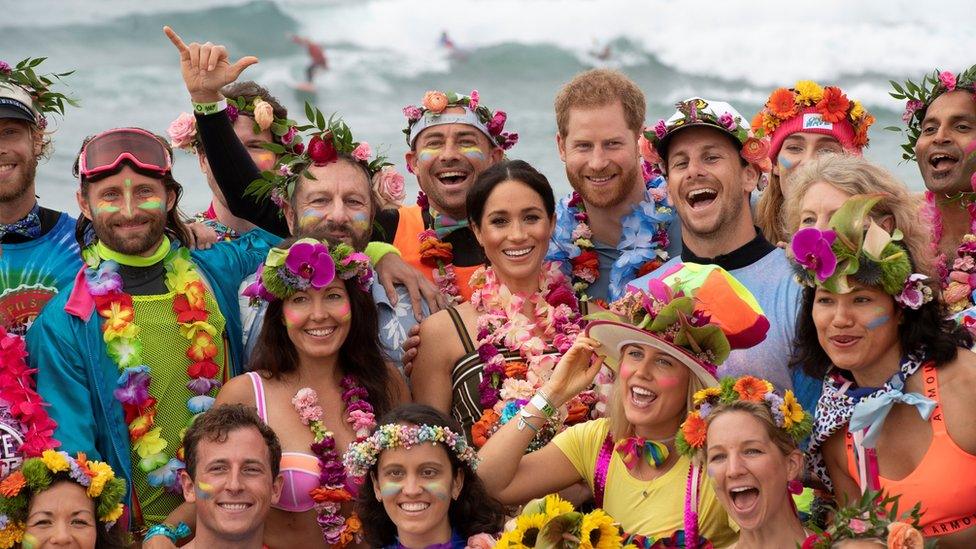Meghan and Harry: Lots of flowers, cheering and baby gifts
- Published
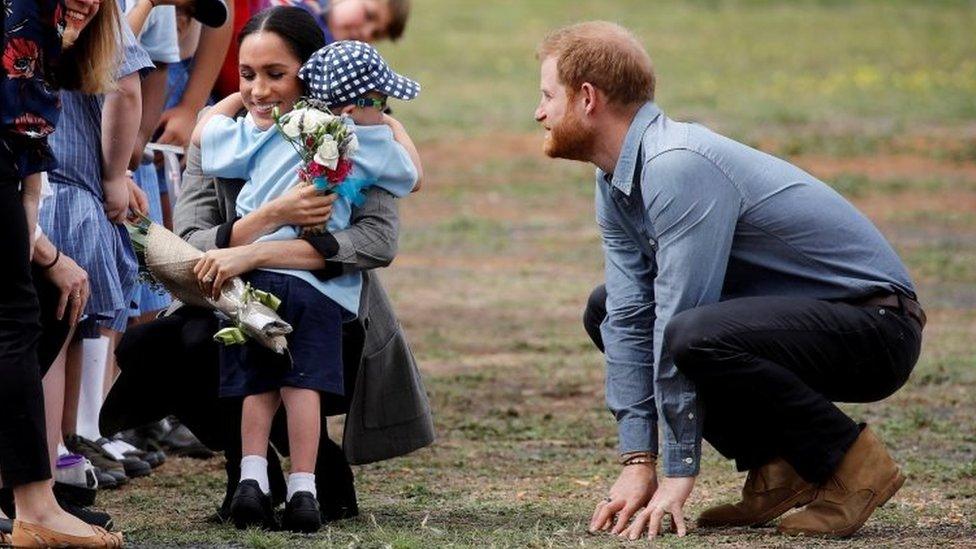
There were lots of flowers.
There was lots of cheering. There were lots of gifts for the expected baby, the announcement of which kicked off the tour.
There were welcomes from men in grass skirts and from men with their tongues sticking out.
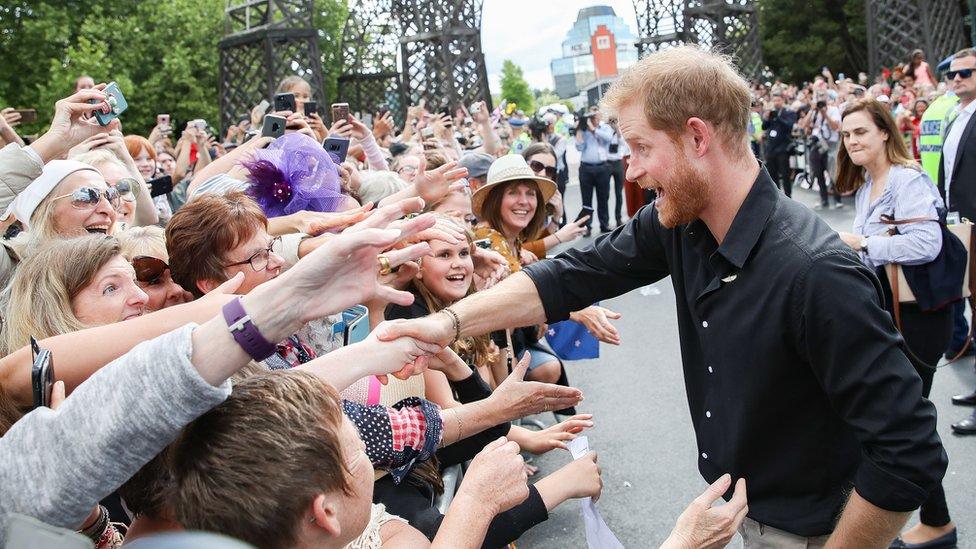
There were plenty of excited greetings for Harry and Meghan, from handshakes...

...to the touching of noses and foreheads - a traditional Maori greeting
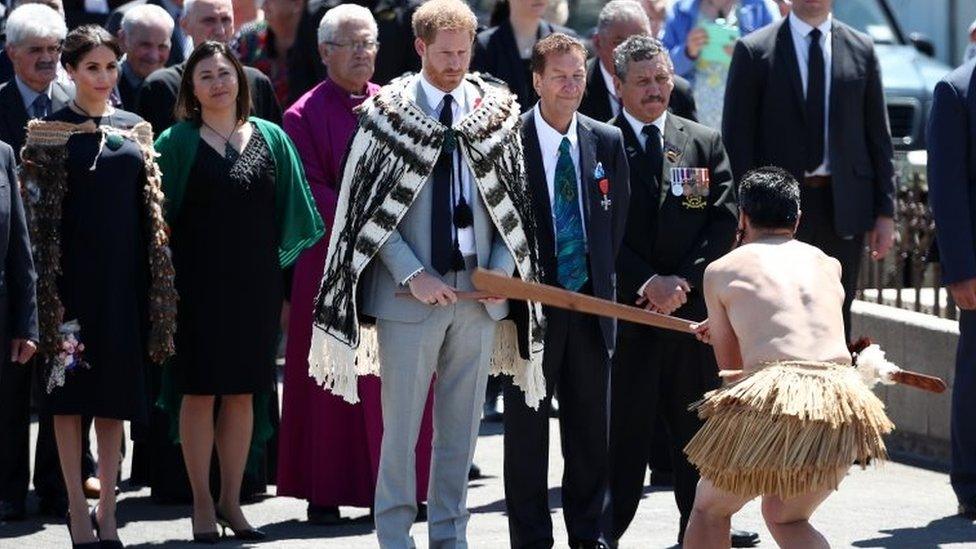
And the couple were treated to a formal powhiri welcome in Rotorua, New Zealand
There were lots of women and young(er) people causes that the couple want to push.
And there were speeches and unveilings and cakes (one baked by Meghan), meetings with prime ministers, wreath laying and war memorials.
The prince opened his speech in Auckland by greeting the audience in six languages
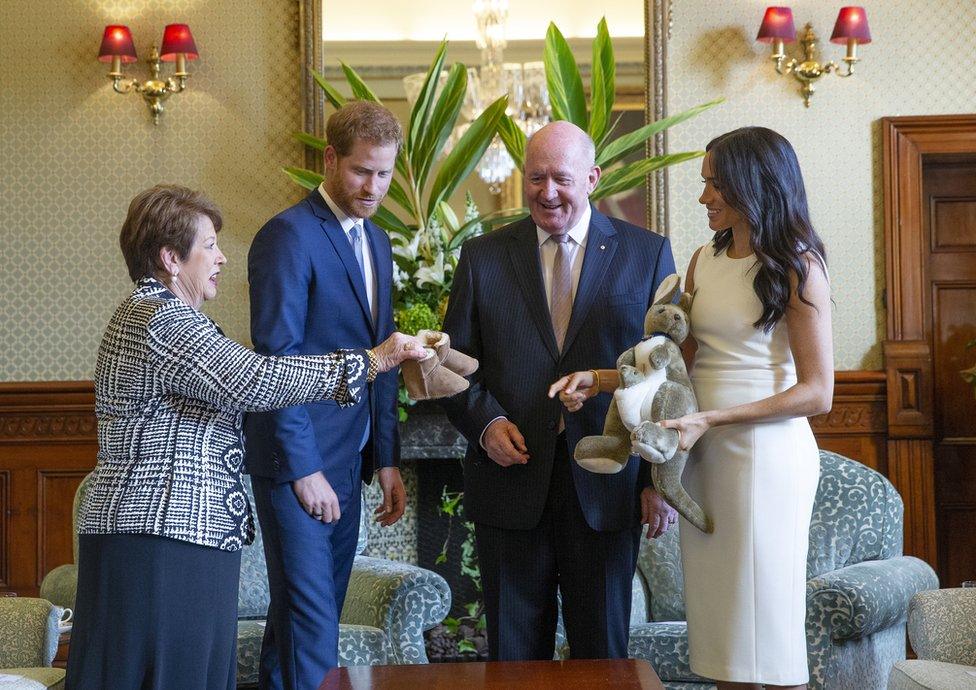
A small pair of Ugg boots and a cuddly kangaroo were the first baby gifts given to the couple

The duke and duchess also took part in more sombre occasions, including wreath layings
Over the whole thing one question lingered.
Just what are these royal tours for?
Back in the 50s, when the Queen and the Duke of Edinburgh toured the region after the coronation, they travelled by train across Australia. It was an exhausting trip.
They toured the big cities and stopped in or passed through small towns across the vast country. And it's thought that three quarters of the population saw them in the flesh.
Back then, before televisions were commonplace, a royal tour meant that the people could see their sovereign, for the first time, beyond the black and white pictures in newspapers and magazines.
And in an age before global celebrity really existed, let alone beamed into the palms of our hands on Instagram and Twitter feeds, a royal visit was a huge event.
During the Queen's 1957 trip to Paris, such was the crush of people straining to get close, the newspapers reported that the crowds were driven back by soldiers with drawn swords.
There was a whiff of that without the swords in Fiji and Tonga.
Thousands lined the roads in from Fiji's airport, their single storey homes with corrugated iron roofs a backdrop to the kind of popular adulation that most of the rest of the world has given up on.
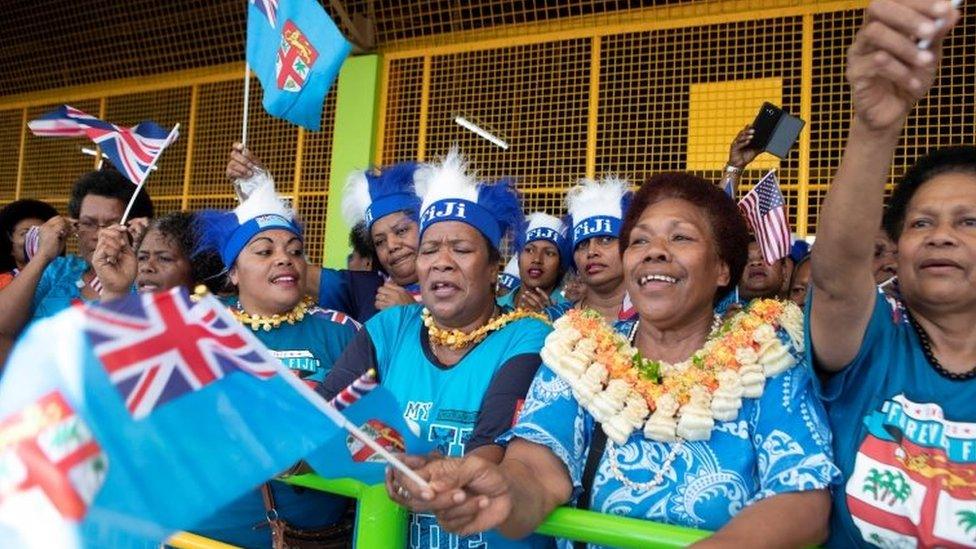
Thousands lined the streets in Fiji, with many waving Union and US flags...
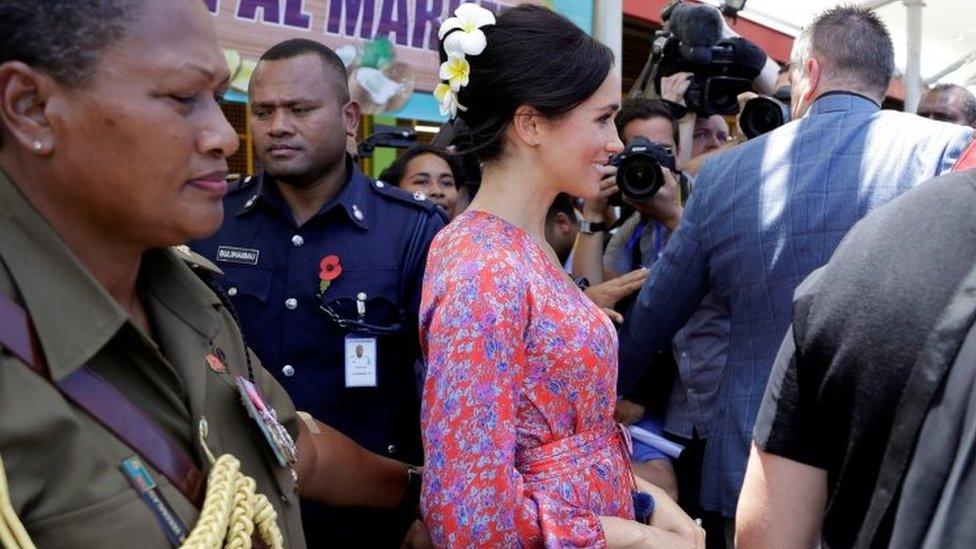
...but this proved too much of a security concern for the duchess, who left a market visit early
In Tonga, a two-day national holiday was declared for the 24 hours of the royal visit, and schoolchildren lined the route into Nuku'alofa, their bright uniforms standing out against the vegetation behind them.
Not many celebrities go to Fiji or Tonga, lovely though both countries are. So a royal tour is a big deal.
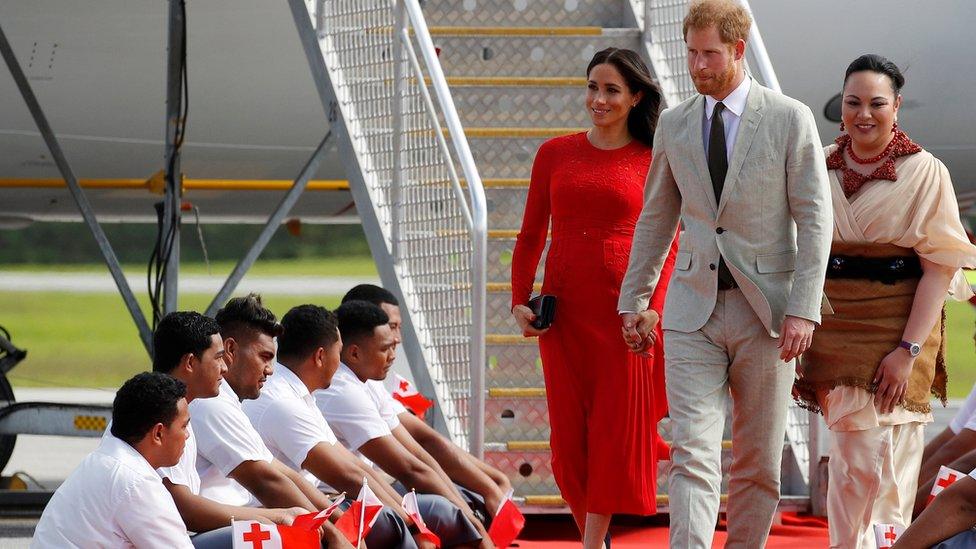
In Tonga, lucky schoolchildren were given the day off to cheer the couple's arrival

And later Tongan artists performed for the royal couple
And equally in Australia and New Zealand, both quite a long way from anywhere else, it's quite an event to have people this famous visit and do things in public.
"We don't have that many celebrities back home," an Aussie friend told me in London before the trip. "This will be a big deal."
And so it was.
At Australia's Bondi beach the crowds were building from six in the morning.
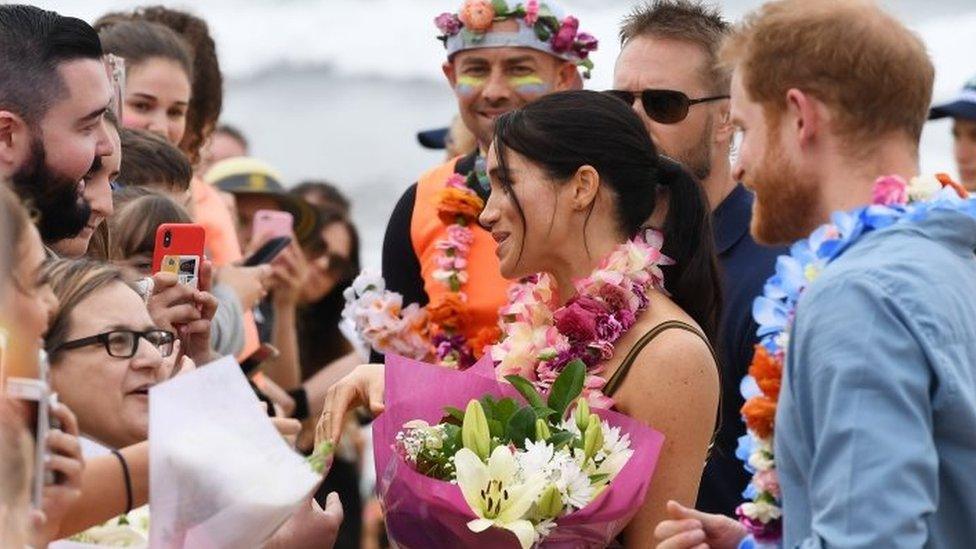
It had been a long wait for some of the crowds who gathered at Bondi Beach in Australia
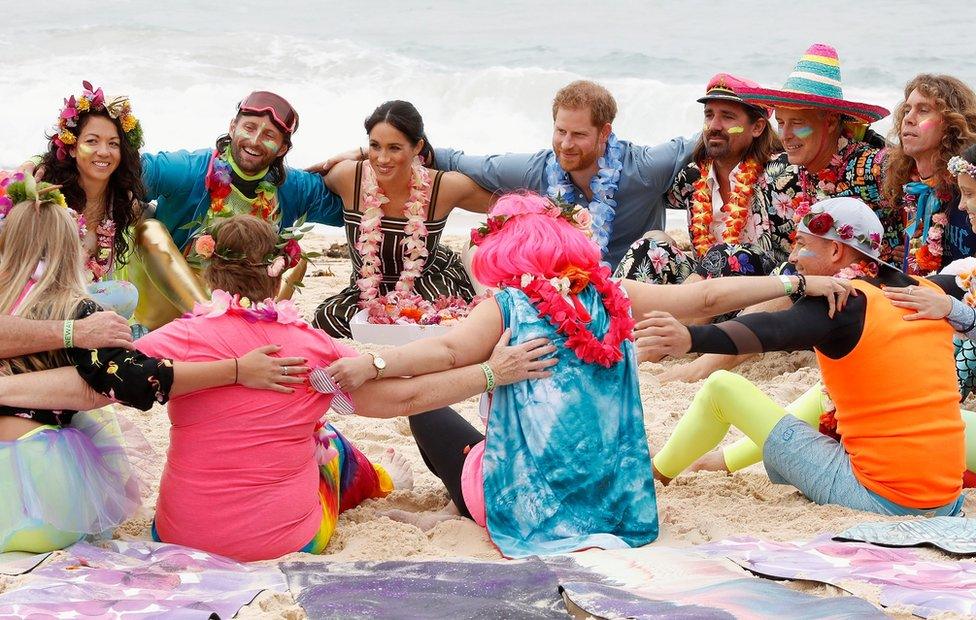
Garlands and bright colours were the order of the day
Outside Wellington's National War Memorial Park, a curious place for a walkabout, thousands stood in chill winds to catch a glimpse of, or grab a few words with, the couple.
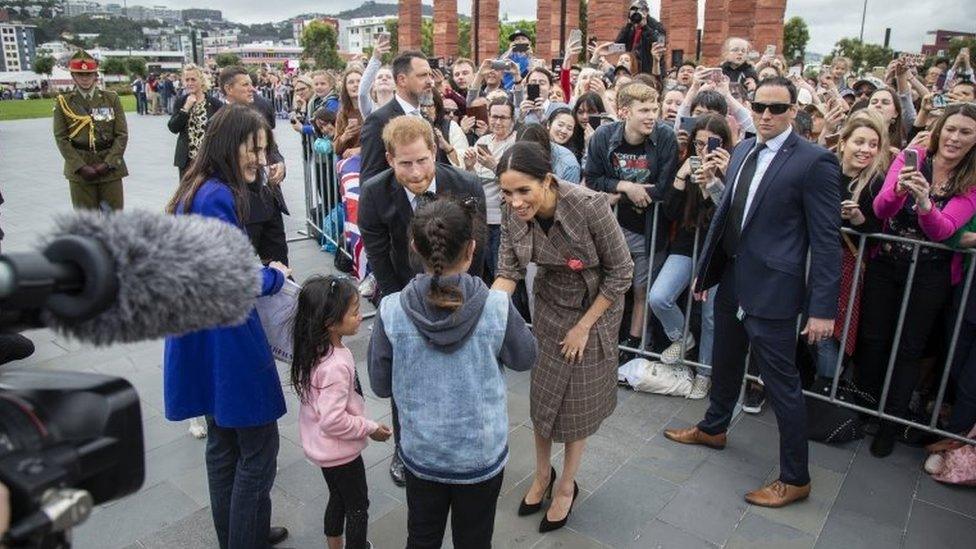
More crowds clamoured to get a picture of the couple in New Zealand
But when you talk to the people in the crowds about quite why they have waited for hours up against a crash barrier, loyalty to or interest in the crown is rarely mentioned.
"Curiosity." "Celebrity-spotting." "My mother used to come." Those kinds of comments were pretty common.

The excitement of it all proved too much for some
So is Heritage'n'Hollywood what the House of Windsor has become?
No, because there was more to this trip than the walkabouts that so visibly energise Harry and that Meghan is so good at.
There was the Invictus Games in Sydney, the sporting competition for wounded military veterans that Harry created and has championed.
Harry opened and closed the Games, and spoke of an Invictus Generation of men and women who were not to be pitied for their injuries but instead lauded as an inspiration to us all, in a time of division and acrimony.
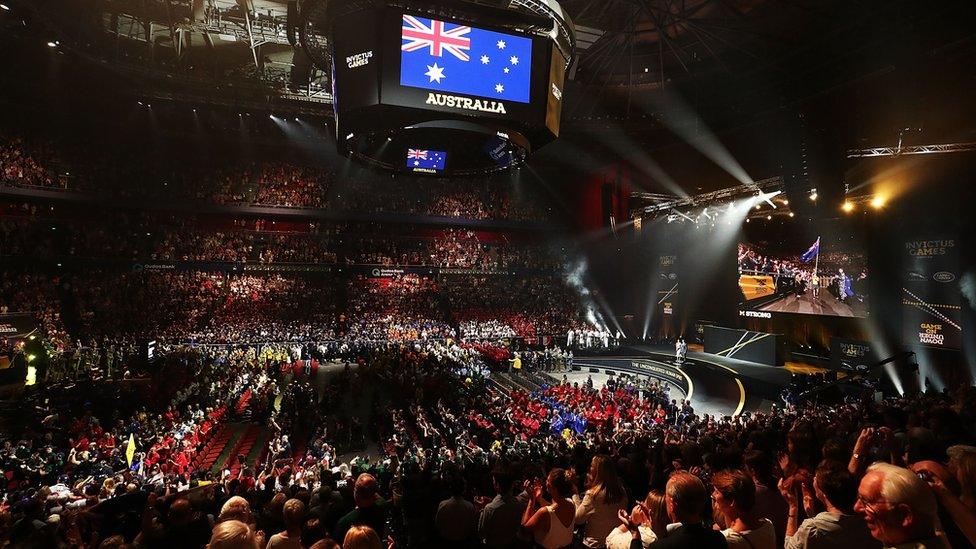
Prince Harry took part in the opening and closing ceremony of the Invictus Games...
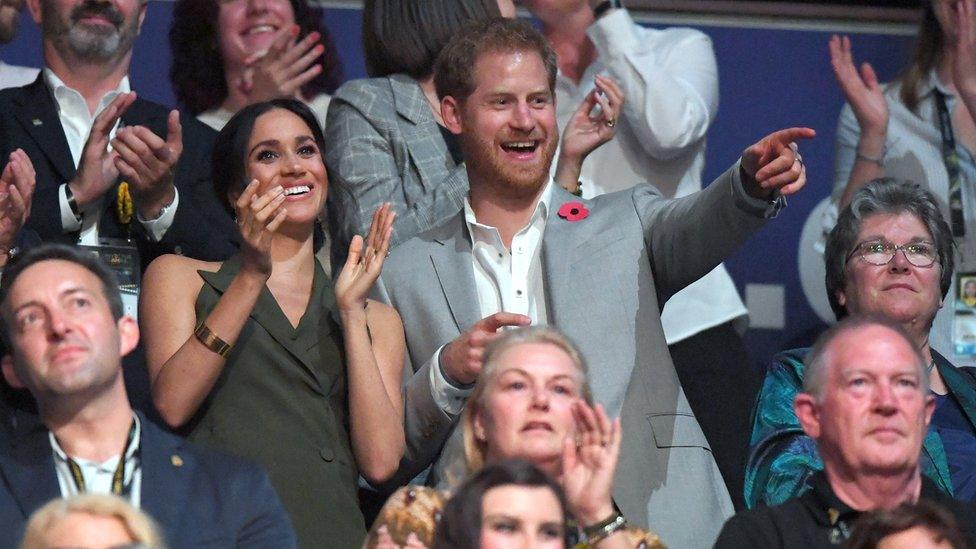
...and enjoyed watching competitors from the sidelines
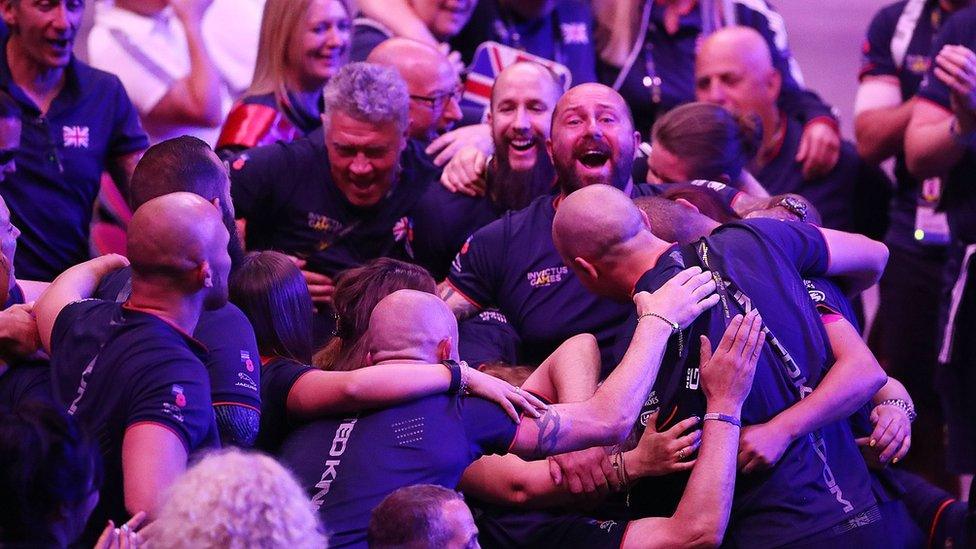
There were many hugs and cheers from competitors at the end
There were countless smaller, often unreported events, charities championed, a spray of royal sparkle rewarding long years of unremarked service to others.
There was Harry's passion for openness about mental health problems, whether it was to military veterans, or Australian farmers struggling with drought.
It is not a particularly fashionable cause. But he nags away at it, and makes sure it is highlighted at stop after stop.
And there were Meghan's tentative steps into the arena of women's empowerment. She didn't speak much on this tour. Often she seemed like a throwback to another era, the dutiful wife walking behind the royal husband.
But when she did we got an idea of the kinds of causes she will gradually make her own.
Meghan's message of female empowerment

The duchess gave speeches, including about the importance of suffrage
And potential pitfalls emerged too.
If Harry is enthused by the crowds at walkabouts, he is often obviously bored at set-piece ceremonials, and has yet to find a way to mask it.
It is surprising to see him scowl his way through events that people have poured time and care into.
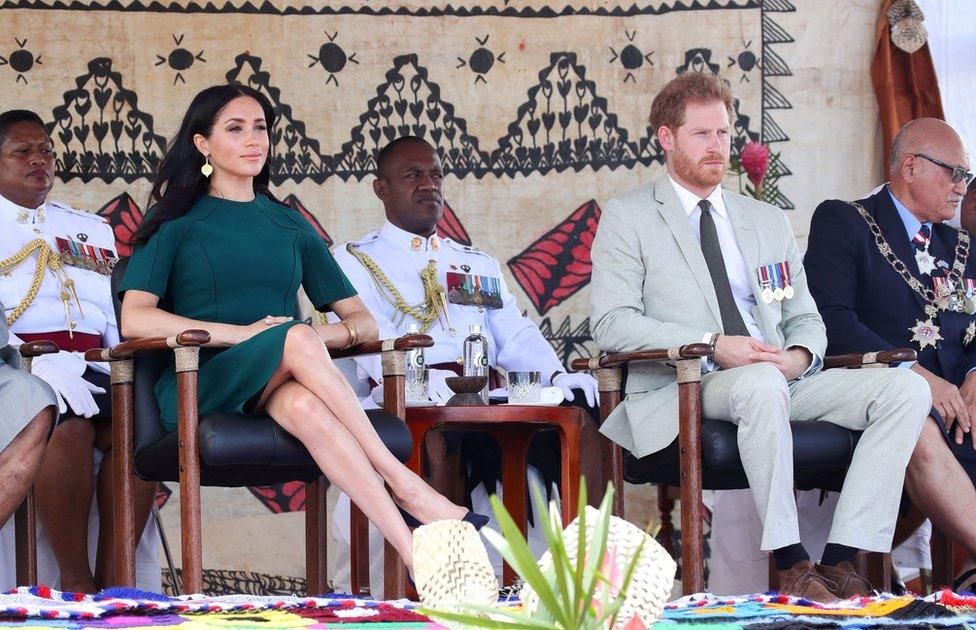
And the couple watched a number of ceremonies during their tour
And more than once Meghan by herself and with Harry by her side - swept her way through occasions that demanded just a bit more of her time.
People travelled a long way and waited a long time in Fiji and Tonga to see her, and them. At a couple of events, many were disappointed.
And there is Harry's undisguised dislike of the media. He often gives the impression that he would rather carry out a tour like the one just passed with no press or broadcasters present at all.
But like politicians in the pay of the public, modern royalty when out on the job is meant to be open and accountable. And that means accessible too.
Because that's what these tours are: the job.
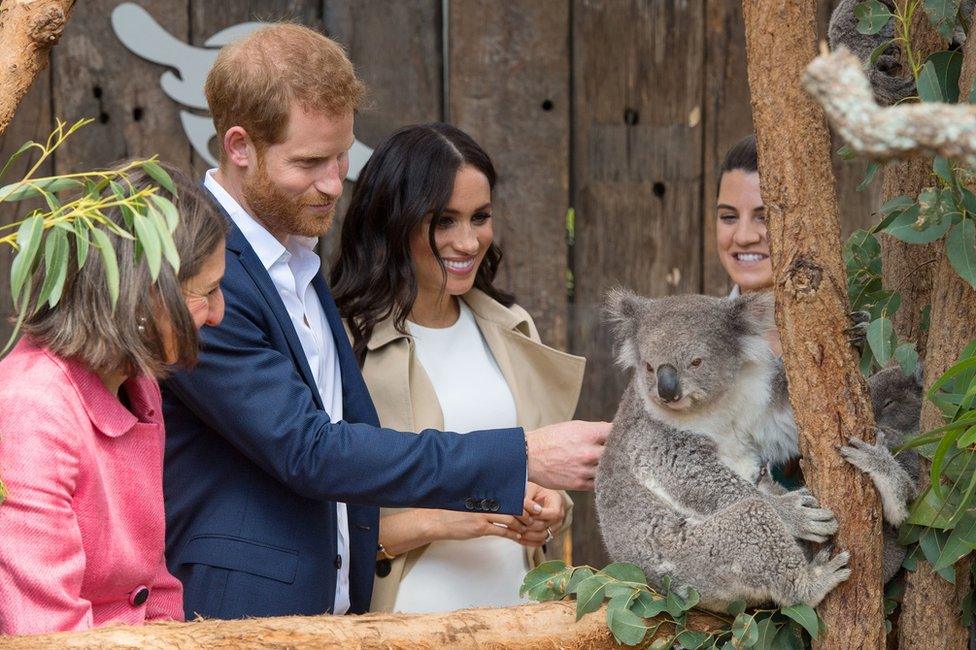
Harry and Meghan found they were fans of koalas in Australia
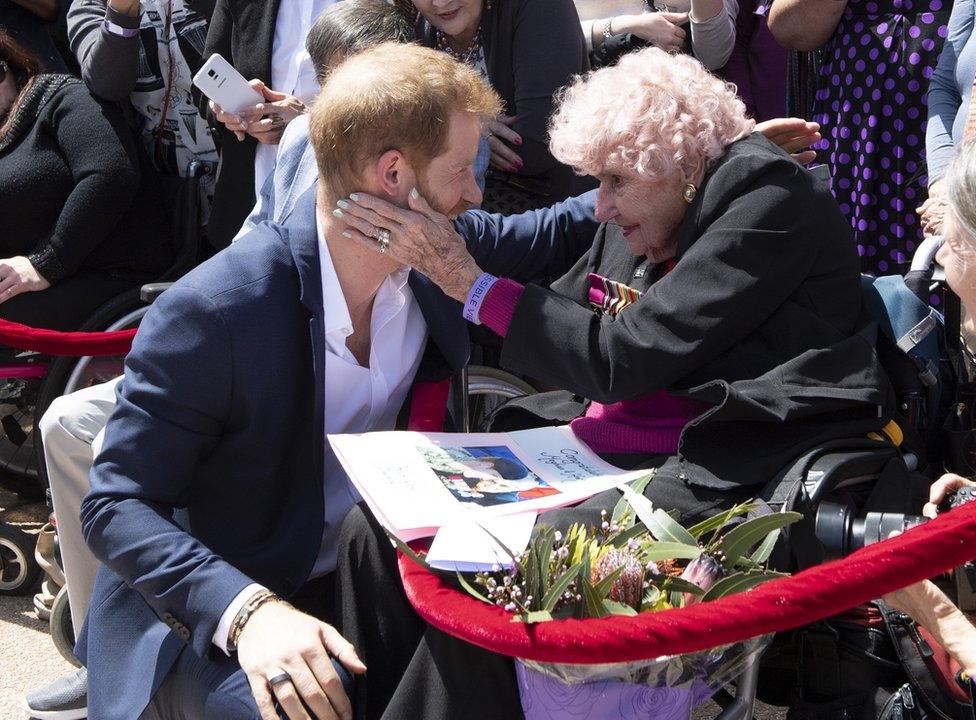
While perhaps Prince Harry's biggest fan, 98-year-old Daphne Dunne, met him for a third time
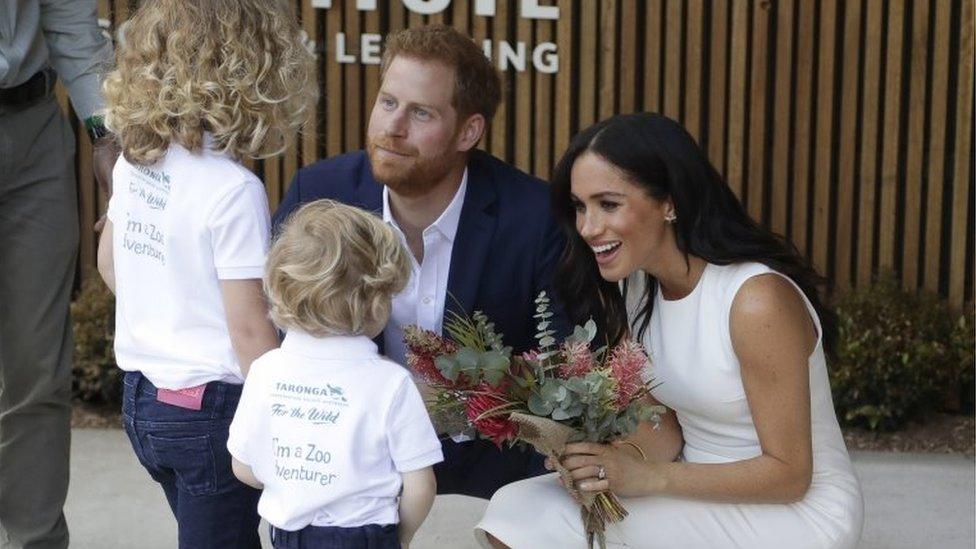
And a new generation of admirers presented flowers to the couple
And it is a job that the royals do extraordinarily well - soft-power diplomacy, the projection of British culture and heritage that yields payback in goodwill, tourism and the promotion of British values.
There is no substitute.
Neither prime ministers nor pop stars nor footballers, could pull together the crowds and causes that Harry and Meghan did in this long four country tour.
It was, few will disagree, a job well done.

Tour highlights
The couple signed off their tour by sharing a photo of Meghan cradling her baby bump - taken by Prince Harry.
Allow Instagram content?
This article contains content provided by Instagram. We ask for your permission before anything is loaded, as they may be using cookies and other technologies. You may want to read Meta’s Instagram cookie policy, external and privacy policy, external before accepting. To view this content choose ‘accept and continue’.

The tour began with the announcement that they were expecting their first child - cue an array of baby gifts, including a toy kangaroo, complete with joey, and little Ugg boots from the Australian Governor-General Sir Peter Cosgrove, and his wife Lynn
The couple spent plenty of time meeting the crowds that turned out to meet them, and there was one a memorable protocol-breaking beard rub and hug from one five-year-old boy in Dubbo, Australia
And one woman from Christchurch, New Zealand, spoke about how she waited seven hours to meet the duchess, who she says supported her struggles with mental health by chatting to her on Instagram
Prince Harry praised Invictus Games competitors for their part in turning the issue of mental health "from a sad story to an inspiring one"
In Fiji, the duchess spoke about the importance of women getting university education and in Tonga she appeared to get the giggles while watching a performance by schoolboys
The couple took part in activities on their tour, Meghan showing off her impressive welly-wanging skills in New Zealand
- Published31 October 2018
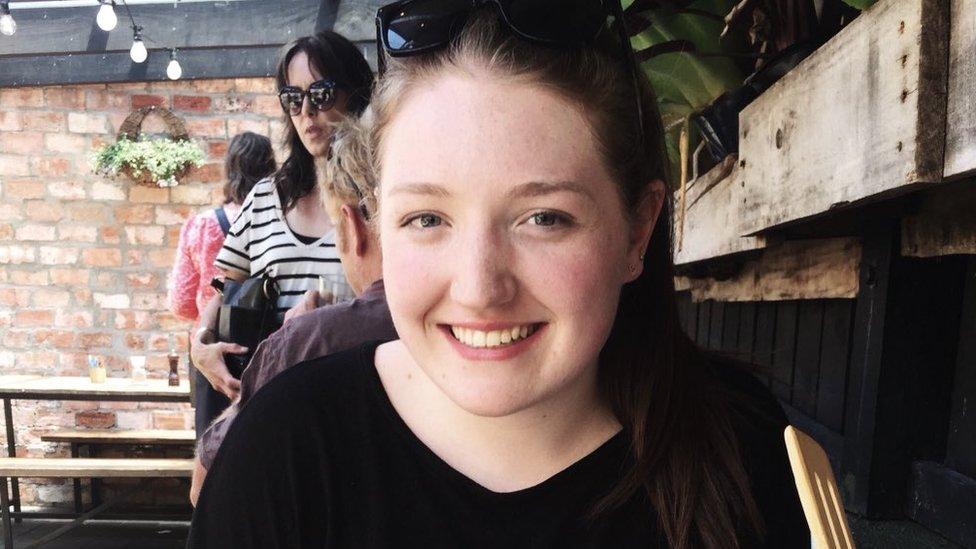
- Published27 October 2018
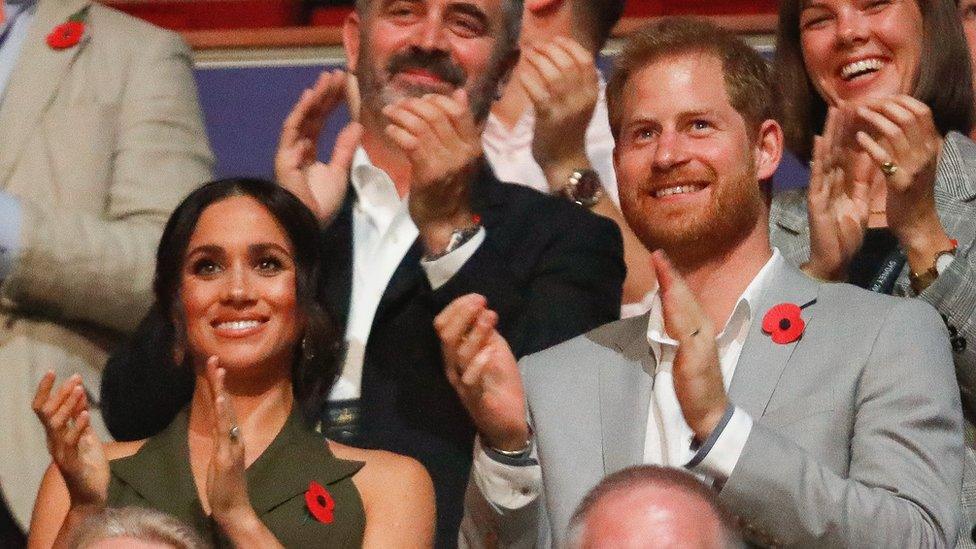
- Published16 October 2018
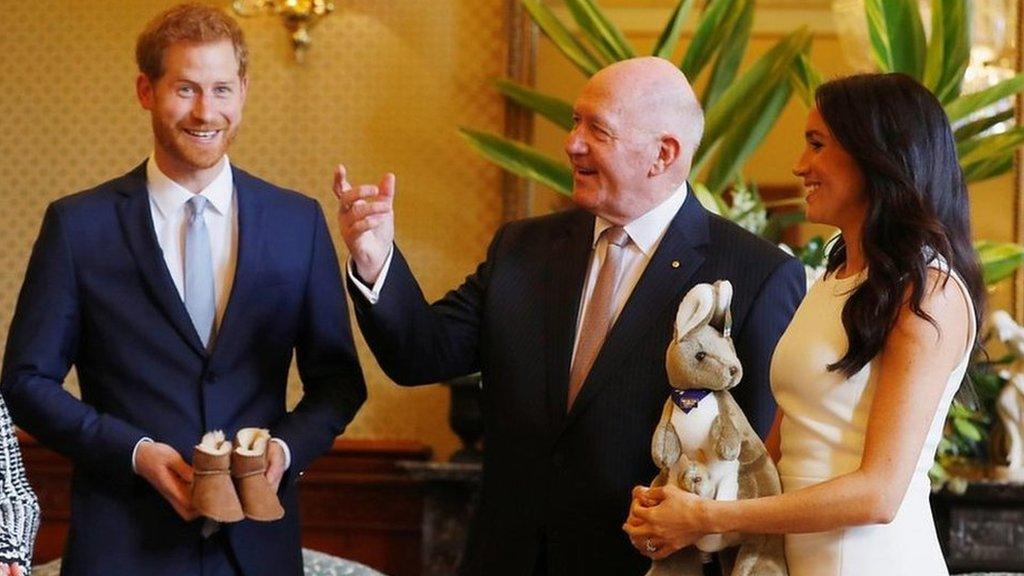
- Published19 October 2018
